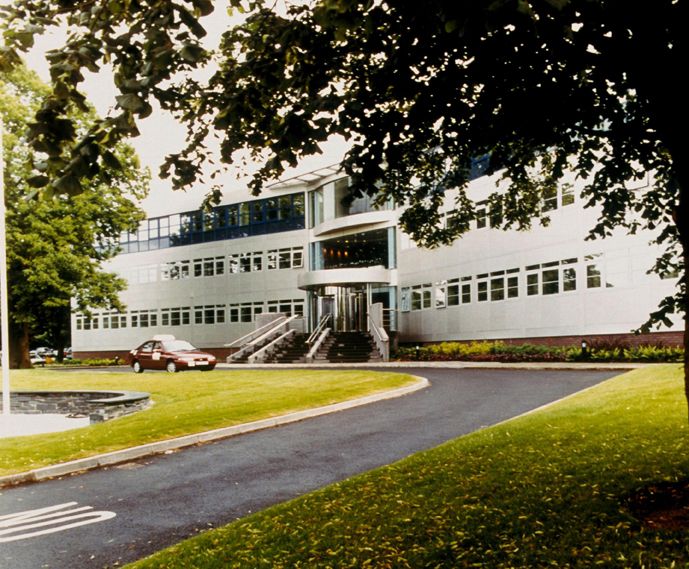AstraZeneca's R&D Trimdown, Points to Shift in The Way Big Pharma Invents
AstraZeneca’s decision to cut 5,050 jobs by 2016 and cease R&D operations at its Alderley Park, UK facility has many wondering where CEO Pascal Soriot plans to take the company.
AstraZeneca’s decision to cut 5,050 jobs by 2016 and cease R&D operations at its Alderley Park, UK facility has many wondering where CEO Pascal Soriot plans to take the company. The opening of a new $500 million facility in Cambridge is at once a consolation prize for the UK government’s efforts to placate a skittish industry. It’s also a clear display of pharma’s need to tap the pool of talent that resides in academic research centers, teaching hospitals, and other institutions-a last gasp for the “not invented here” mindset.
Alderley Park, home to 2,900 jobs and 40 years of history in drug discovery, is known for its status as AZ’s central R&D hub, but not any longer, with more than 1,000 of the facility’s jobs shifted to a new, purpose-built facility in Cambridge. The closure is a blow to the parliamentary constituency represented by finance minister George Osborne, an area hit hard by the loss of the UK base in manufacturing.

AstraZeneca's Alderley Park facility
The company is also moving 300 of its R&D employees in the US from facilities in Wilmington, Delaware to a more updated Gaithesburg, Maryland location, where AZ can build on the biologics footprint of its 2007 acquisition of MedImmune. In the process, the company will axe another 650 positions. In total, the net worldwide job cuts amount to ten percent of its 51,700 workforce, with 2,300 of the cuts in sales and admin positions, most of which are within the EU.
The cuts align with CEO Soriot’s push for more deal-making in an effort to replenish the company’s depleted drug portfolio. Analysts estimate AZ stands to lose six billion dollars in the next five years due to loss of patent protection for many of its branded drugs. Soriot also notes the company will spend less money on research for anti-infectives and neuroscience in favor of cancer, cardiovascular and metabolism disorders, respiratory and inflammatory diseases. To ensure that research remains close to the business AZ will also keep its business development function embedded in the R&D operation-a position at odds with the org charts in the other big pharma firms.
The recent shifts in R&D taking place across the industry show its growing desire to build a more symbiotic relationship with academic research institutions. Return on R&D investment has become less about simply producing new medicines but creating products that can me documented as addressing the standard of care. Companies are finding they have to spend more on early stage discovery to stay relevant. Dr. Ken Kaitin, Director of The Tufts University Center for the Study of Drug Development points out, “It’s tough to justify because this type of research occurs very upstream, and it’s a long time before companies see the fruits of that effort.” He continued, “By partnering or collaborating with academic institutions, teaching hospitals, and government agencies where this is already going on, big pharma companies can divest their efforts in that area and take advantage of some of the (hopefully) exciting and innovative research going on in the academic centers.” These coalitions ultimately benefit both the companies and institutions that partner with them, but as in AstraZeneca’s case and others, such shifts take a toll on workforce morale-a red flag in an industry that depends almost entirely on productive human capital.
Soriot discussed his strategic plan for the company during AZ’s Capital Markets Day on March 21 in NYC.
What’s your opinion? Will the cooperative relations forming between pharma and academia ultimately reap rewards?
Addressing Disparities in Psoriasis Trials: Takeda's Strategies for Inclusivity in Clinical Research
April 14th 2025LaShell Robinson, Head of Global Feasibility and Trial Equity at Takeda, speaks about the company's strategies to engage patients in underrepresented populations in its phase III psoriasis trials.
Beyond the Prescription: Pharma's Role in Digital Health Conversations
April 1st 2025Join us for an insightful conversation with Jennifer Harakal, Head of Regulatory Affairs at Canopy Life Sciences, as we unpack the evolving intersection of social media and healthcare decisions. Discover how pharmaceutical companies can navigate regulatory challenges while meaningfully engaging with consumers in digital spaces. Jennifer shares expert strategies for responsible marketing, working with influencers, and creating educational content that bridges the gap between patients and healthcare providers. A must-listen for pharma marketers looking to build trust and compliance in today's social media landscape.
Merck’s Oral TLR7/8 Inhibitor Reduces Disease Activity in Cutaneous, Systemic Lupus
May 21st 2025Results from the Phase II WILLOW trial show that enpatoran achieved a statistically significant dose-response and clinically meaningful reduction in disease activity in cutaneous and systemic lupus erythematosus with active rash.